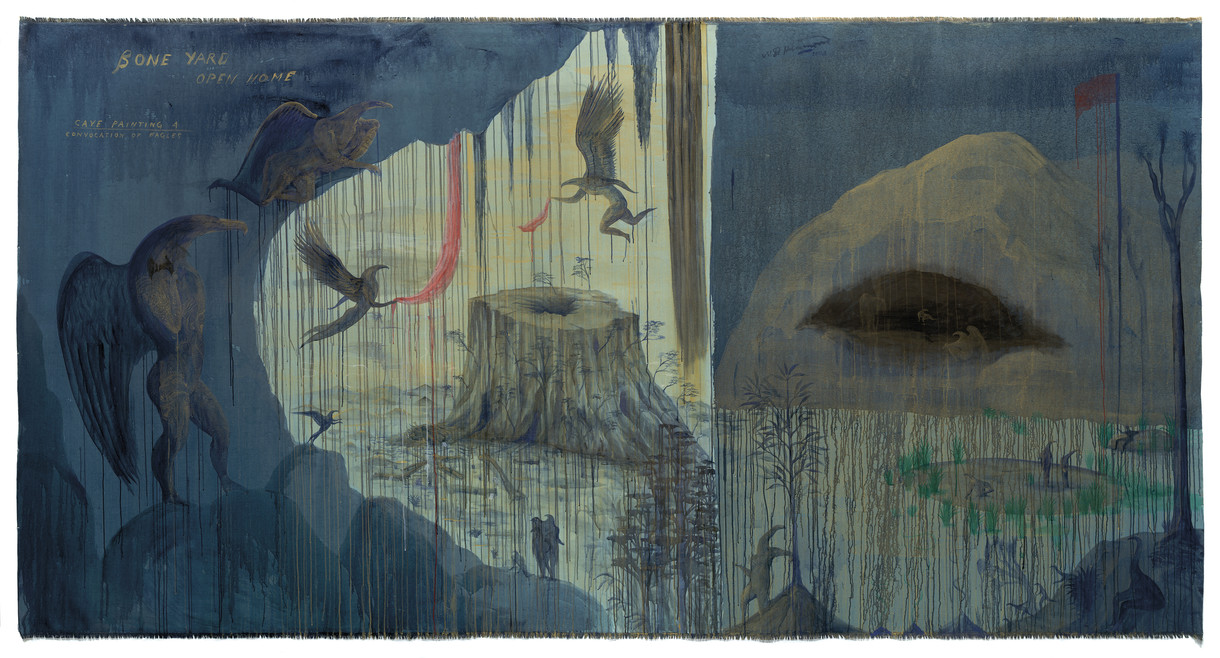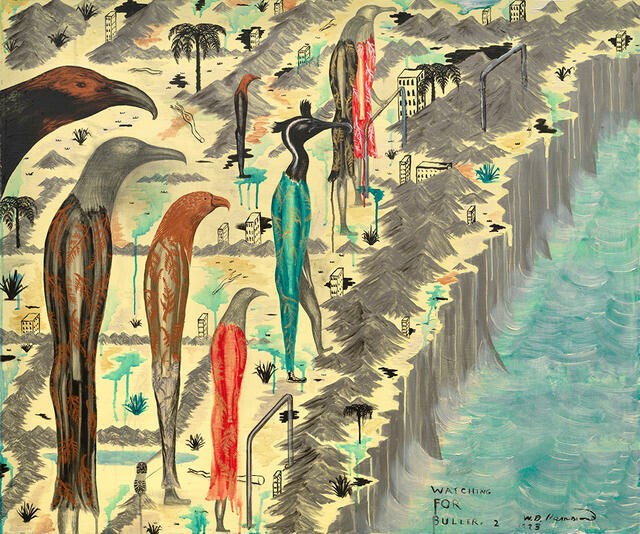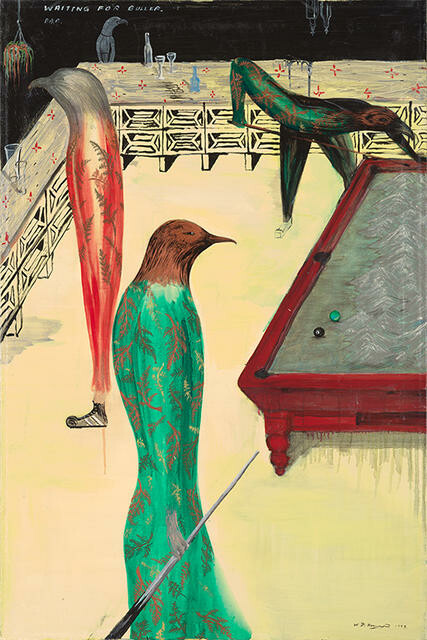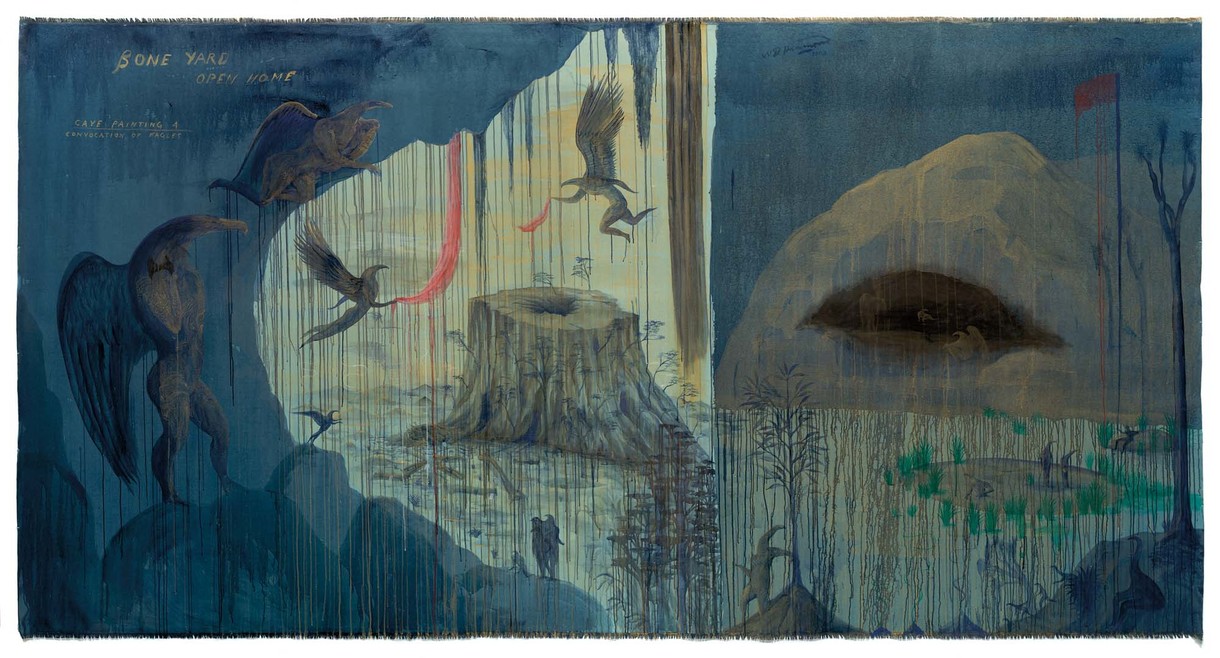B.
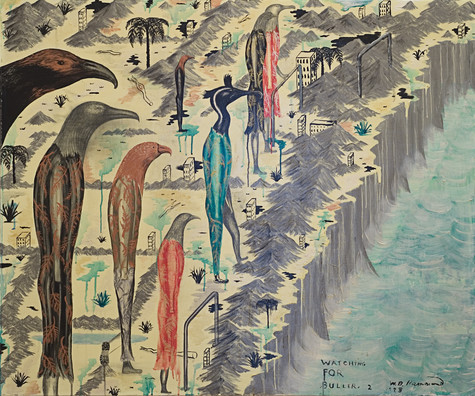
Bill Hammond Watching for Buller. 2 1993. Acrylic on canvas. On loan to the Christchurch Art Gallery Te Puna o Waiwhetū from the artist
Playing the Drums at the Gallery
Note
Over forty works by Lyttelton-based artist Bill Hammond, some of which have never been seen in public before, will be on display at the Gallery from this weekend.
Curator Peter Vangioni said he was delighted to be able to show the work of New Zealand's foremost contemporary artists, who also happens to be a talented drummer.
Bill Hammond: Playing the Drums has been co-curated with the artist himself and features rarely seen works from his private collection alongside pieces from the Gallery and several other Christchurch collections.
“It’s a great opportunity for Christchurch to come together and celebrate one of our own,” Vangioni says.
“The exhibition spans several decades of Hammond’s work and include drawings, prints and paintings from the early 1980s through to some of his most recent pieces, including his iconic bird paintings.”
Hammond is best known for his hauntingly beautiful half-human, half-bird creatures. In these paintings, figures with bird-like heads adopt humanlike stances, conveying a feeling of quiet despair as they gaze out into the distance.
In Waiting for Buller. Bar (1993) Hammond’s figures personify New Zealand’s native birds with a wry sense of humour. Playing pool, drinking wine and relaxing, they wait for the arrival of New Zealand’s colonial ornithologist (or bird stuffer, as Hammond likes to call him) Walter Buller.
Local audiences will also have their first face-to-face encounter with one of Hammond’s largest paintings, Bone Yard Open Home, Cave Painting 4, Convocation of Eagles (2008), which has never been on display in Christchurch before. One of Hammond’s best-known works, the Gallery’s The Fall of Icarus (1995), will make a welcome return on display for the first time in over a decade.
Drumming and percussion, along with an extremely wide ranging interest in music, have been constants throughout Hammond’s life. He played washboard for the legendary New Zealand folk group Band of Hope Jug Band in the late 1960s, and rock drummers, electric guitarists, classical musicians, DJs and flamboyant singers all make appearances in his work, which often also features song titles and lyrics.
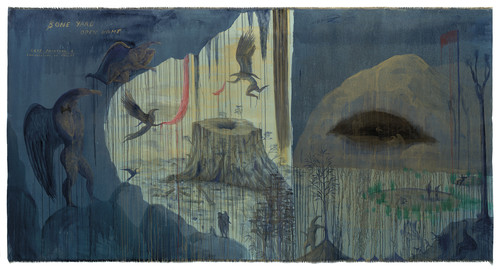
Bill Hammond Bone Yard Open Home, Cave Painting 4, Convocation of Eagles 2008. Acrylic on canvas. Courtesy of the artist and McLeavey Gallery
